Felt Cat Tutorial – Sew A Softie 2018
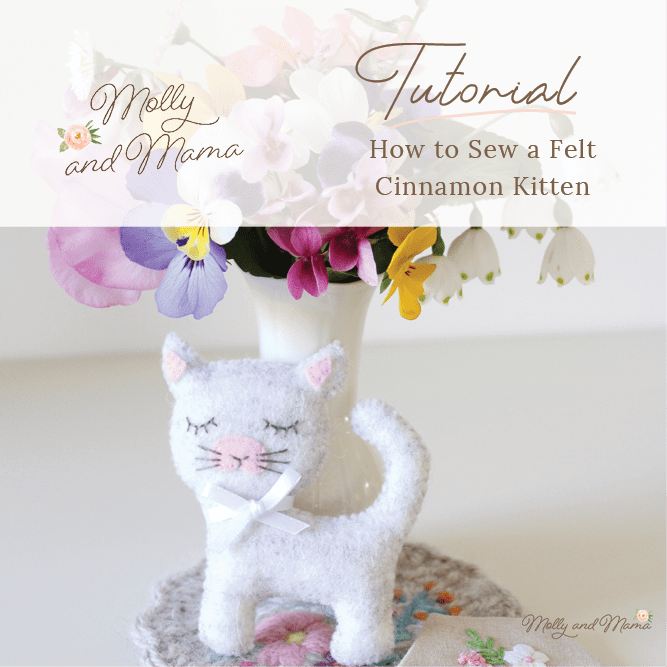
Let’s Make Cinnamon, the cutest little felt kitty cat!
Today is my turn on the blog hop for Sew A Softie month! Wishing a very warm welcome to those who have found their way here for the first time today. We’ll be making a sweet little felt kitty cat called Cinnamon! She’s super simple and straightforward. You can modify the details to make it even easier. Or you can embellish her to really make her your own.
If you’re wondering what Sew A Softie is, Trixi (the founder) explains that it is ‘an initiative that aims to ignite a love of hand sewing in a new generation’. That’s exactly the reason for my own blog, so when I saw Trixi’s month-long celebration of sewing with kids, I just knew I had to join in! If you’d like to see more Sew A Softie tutorials, head to the website, or join the Facebook group for daily updates and links for the entire month of July.
If you’re new here, take some time to look around. Head to the Tutorials tab too, because I have some really sweet projects you might like to make after this one!
I design for beginners and I like to make my instructions really clear. So if you have any questions, feel free to get in touch. I hope you learn some new tips and tricks in this tutorial that you can use in your other sewing projects too.
What’s a Softie? A soft toy!
Tips for Kids: The instructions here seem long, but they’re detailed so that you can learn lots of tips to make sewing easier and more successful. So perhaps have an adult read them through first, to help you.
Now, on to the sewing!
FINISHED SIZE: Cinnamon Kitty measures approximately 3.5″ tall and 3″ wide.

NOTE: This tutorial is for personal use only, for sewing at home and/or teaching another person or child to sew FOR FREE. Reusing or repurposing free Molly and Mama tutorial instructions, templates and images for paid classes, or distributing the materials in classes, to groups, or for commercial purposes, is strictly prohibited. For clarification, or to seek a commercial arrangement, please contact Molly and Mama.
YOU WILL NEED
- 8 inches (20cm) x 4 inches (10cm) of cat coloured felt (preferably wool felt; here’s why – Tips for working with Wool Felt)
- 1 inch (2.5cm) x 2 inches (5cm) of pale pink felt
- small handful of polyester hobby fill or toy stuffing (use cotton wool balls at a pinch)
- 6 stranded embroidery thread (like DMC floss) in colours to match your felt and also in black, brown or grey
- embroidery needle
- print out of the template
- pen
- small embroidery scissors with short, sharp blades for cutting felt
OPTIONAL ITEMS
- freezer paper
- appliqué or craft glue
- small piece of fine paper lunch wrap or tissue paper
- erasable marker
- ribbon, buttons, or other embellishments
INSTRUCTIONS
1. Print out the TEMPLATE. Ensure you print at 100% with no cropping or scaling. To make larger or smaller kitties, simply adjust the print size.
2. Cut out 2 cat bodies (from cat coloured felt) and one nose and two inner ears (from pale pink felt). There are a couple of ways you can transfer your pattern template to your felt, in preparation for cutting. When cutting your felt use small and sharp scissors that have short blades (like embroidery scissors). This will give your felt a neater edge, and you’ll also find your shapes are more accurate.
Pinning the Template: Roughly cut around the outside of your template leaving a small margin between the paper edge and the template lines. Lay your paper template over your felt and pin it in place. Carefully cut out the template by precisely following the template lines. This method won’t be suitable for cutting out small pieces of felt though. You can stick the template pieces in place with low adhesive sticky tape, and peel off the tape after cutting out each shape. Alternatively, you can also use freezer paper to help with this process. It’s a much easier method to use!
Using Freezer Paper: Freezer paper can be purchased online, or often at your local Quilting Store. It comes in a pack of pre-cut sheets (suitable for your printer), or is sold by the metre from a large roll.
Print (or trace) your template onto the paper side of the freezer paper. Roughly cut around each template piece and lay it on the felt. Using a warm iron, run it over the paper side of the template*. The heat will help the plastic underside of the freezer paper to adhere to your felt. Cut out the template pieces on the line, and then simply peel the paper away. It comes away easily and leaves no residue. Keep the freezer paper templates as these can be reused a number of times.
*This process is best suited to wool felt. Test a small area of your felt with the iron and paper before commencing. Please be sure to cover your felt with a press cloth (or scrap piece of cotton fabric) so as not to damage it (especially if the felt is not 100% wool).
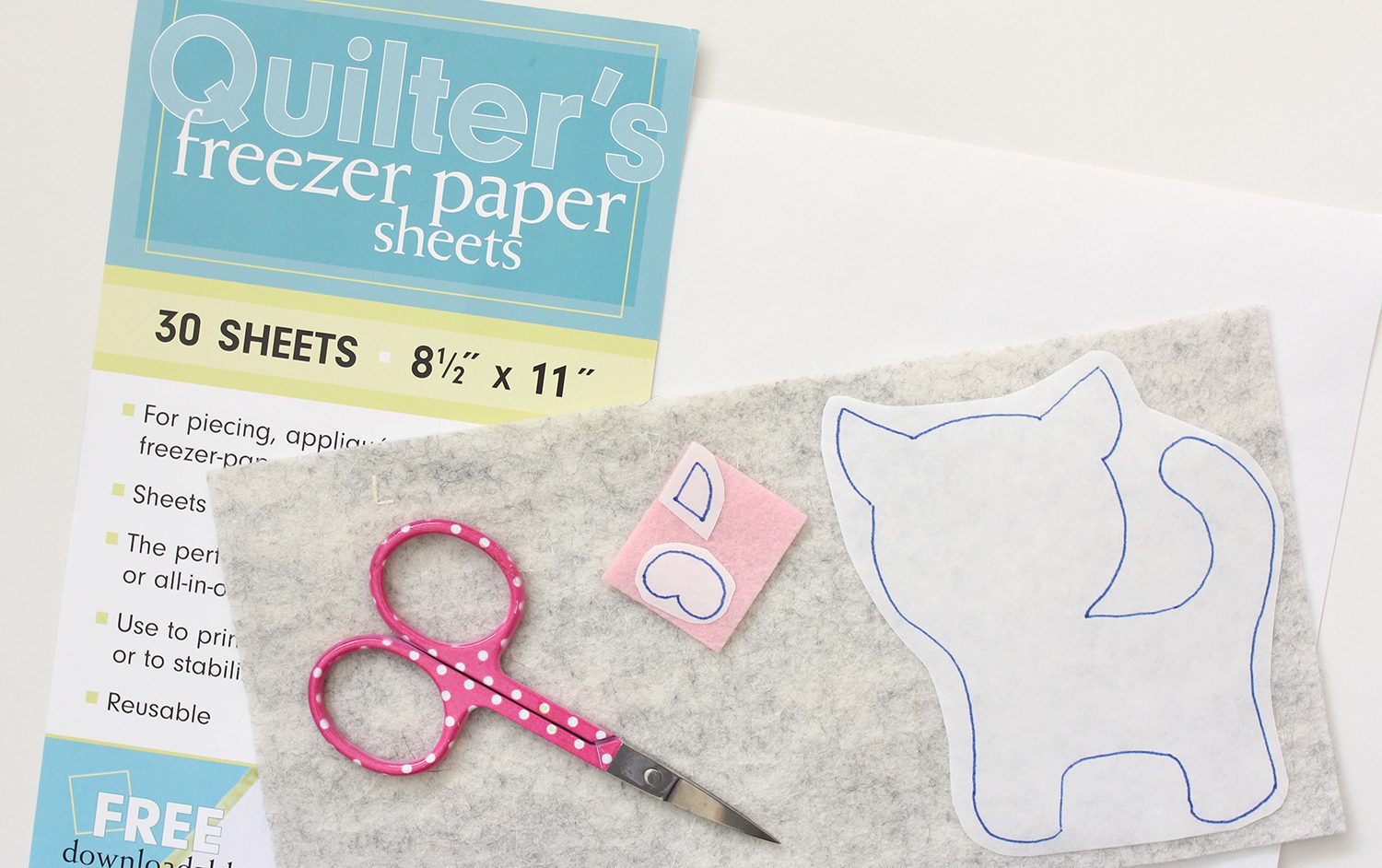
When you have all of your felt pieces cut, you’re ready to start stitching!

3. Thread your embroidery needle with a single strand of pale pink floss. Place the inner ear shapes over the ears of one kitty shape (set the other one aside) and use a tiny drop of appliqué glue to help secure them in place. Alternatively, hold the shapes down as you sew them in place, using a simple whip stitch or running stitch. Don’t forget to start and end your stitching on the wrong side (the back) of the felt. If you prefer, you can use craft glue to secure the inner ears and nose (without stitching), but be sure the glue is dry before proceeding with the net step.
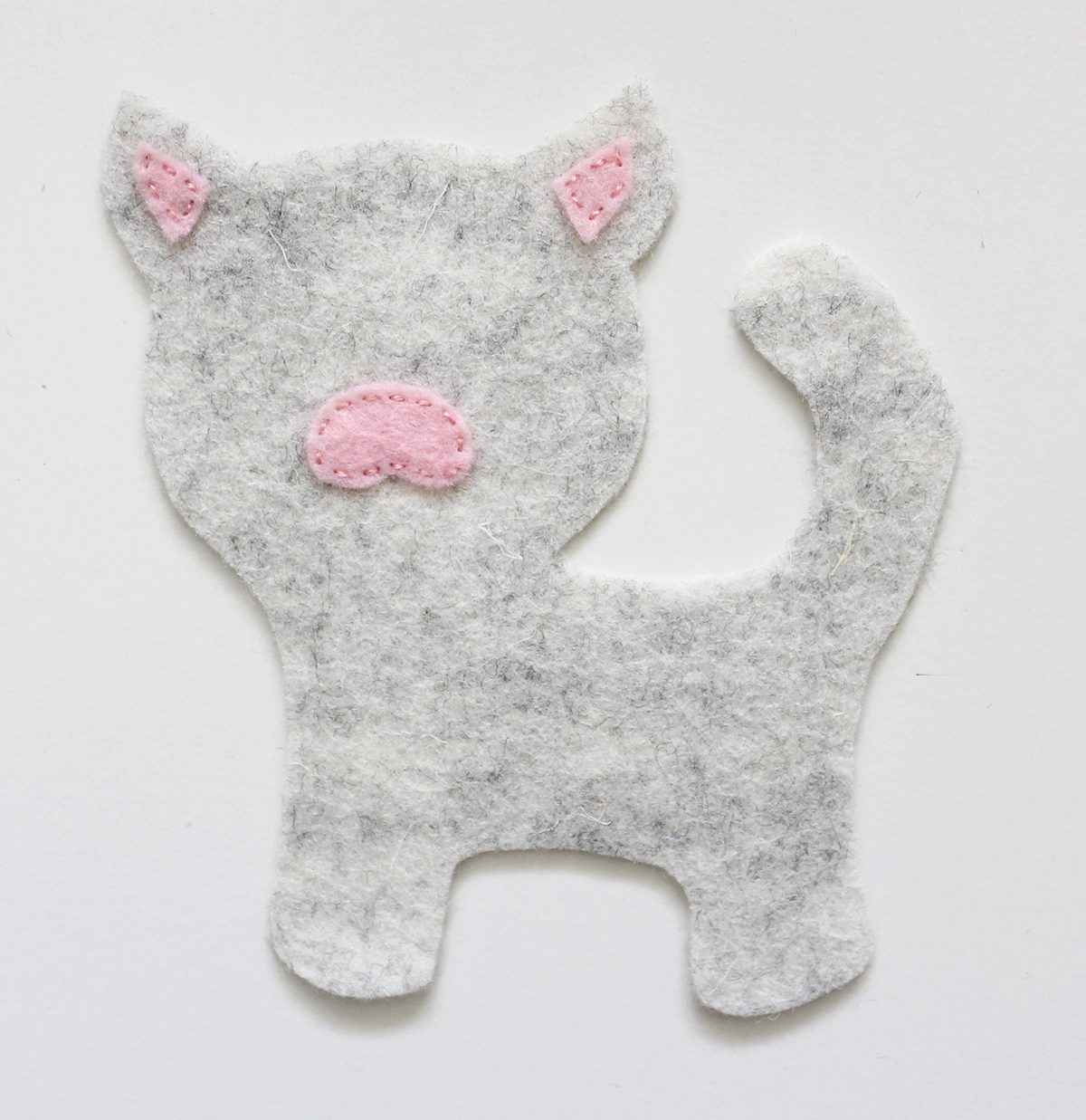
4. Use the same method as above to secure the pink nose shape in place. Use your template as a guide for where to position the felt.
5. Embroider the eyes, nose and whiskers with two strands of embroidery floss in black, brown or grey. Use the template as a guide for placement. Draw the features on using an erasable pen or use the handy trick described below. (As an alternative, you could also use glass beads for the eyes (if the kitty is for an older child), circles of dark felt, or even draw the facial details on with a permanent marker.)
- Trace the kitty face shape and facial details onto a small piece of thin paper lunch wrap or tissue paper. Tip: Don’t trace the details with lead pencil, as the lead will ‘muddy up’ your floss as you stitch!
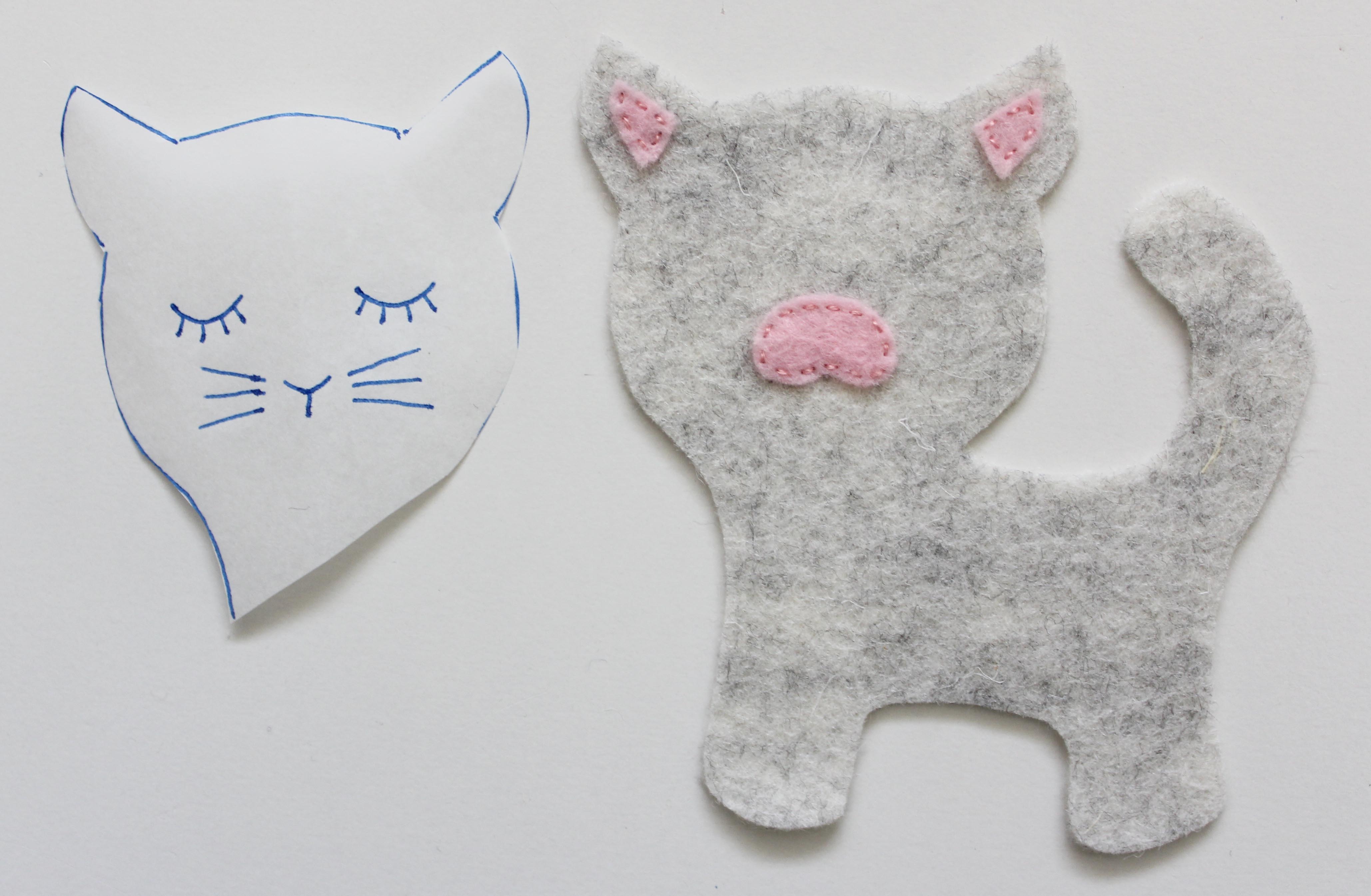
- Cut around the outside edge of the paper. Pin the paper over the kitty’s head shape, making sure everything lines up.
- Using back stitch, sew the facial features by stitching directly through the paper. First, follow the lines to sew the mouth with small back stitches. Then stitch the whiskers with long, single stitches. Next, stitch the length of one eye first, then the eyelashes. Then stitch the other eye and lashes.
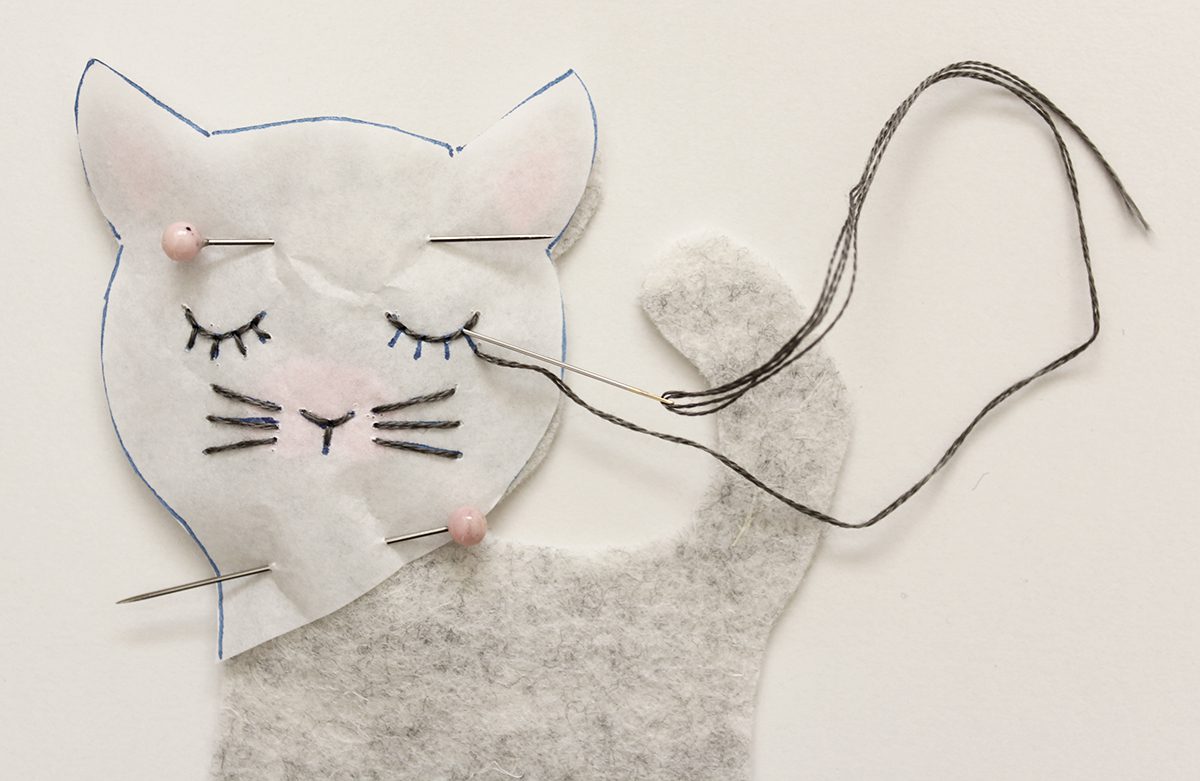
Here’s a little refresher on how to back stitch. You might also like to read this tutorial.

- When you’ve finished stitching, hold the stitches with one hand as you gently tear away the paper with the other. Use your needle to help tease any stray bits of paper out from under the stitches (if necessary).

6. Pin the two kitty shapes together. Using two strands of matching embroidery floss, whip stitch the two shapes together. Hide the start of your stitching (your knot) inside the kitty shapes. Start sewing behind the head and sew along the back and up one side of the tail. Roll a small but long length of hobby fill and place it inside the kitty’s tail.
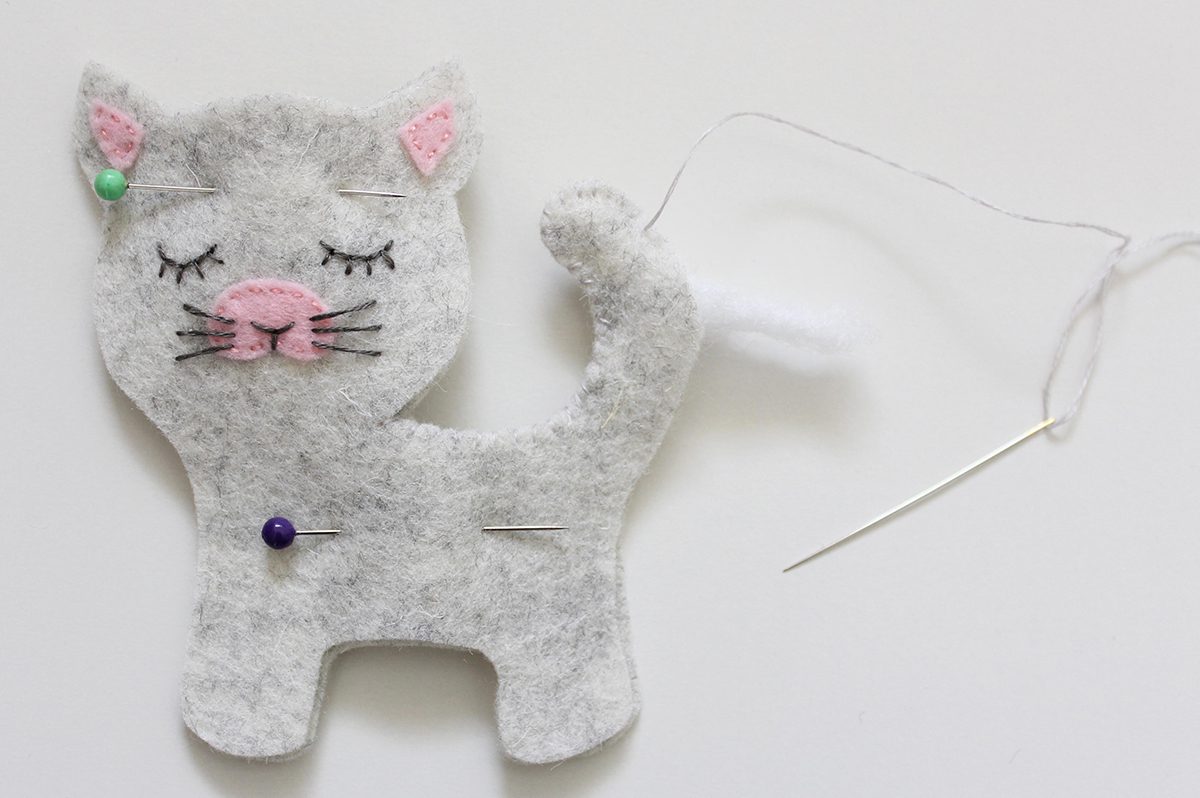
Continue to sew along the back of the tail, and then down around the back foot. Stuff the back foot and hind end of the kitty with stuffing, using only very small amounts. Continue to stuff firmly and sew until you come to your starting point. Finish off your stitching well, so that the end of your floss is hidden inside the kitty.

7. Add a bow, or other embellishments if you like. Then have fun playing together!
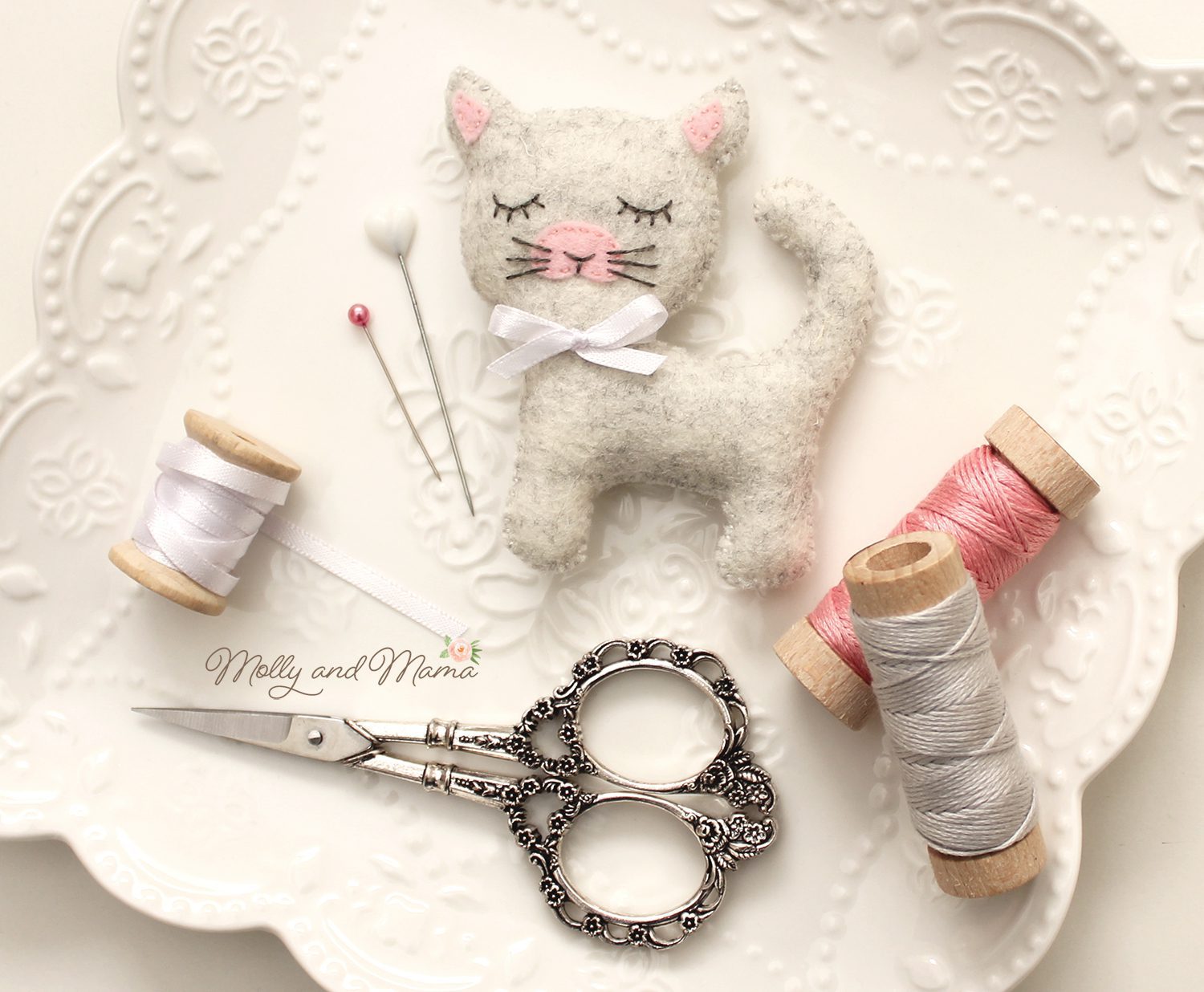

Thanks for joining the Sew A Softie initiative! If you’ve had a look around the blog and you like what you see, you might want to sign up to my newsletter, join me on Facebook or Instagram. I love making new friends so be sure to say hello and share your sewing with me!
Head to my Etsy Store to see my range of ‘beginner friendly’ instant download PDF sewing patterns too. I hope you find something you like.
Happy stitching, Lauren.
This post was written by Lauren Wright and appeared first on Molly and Mama www.MollyandMama.com.au


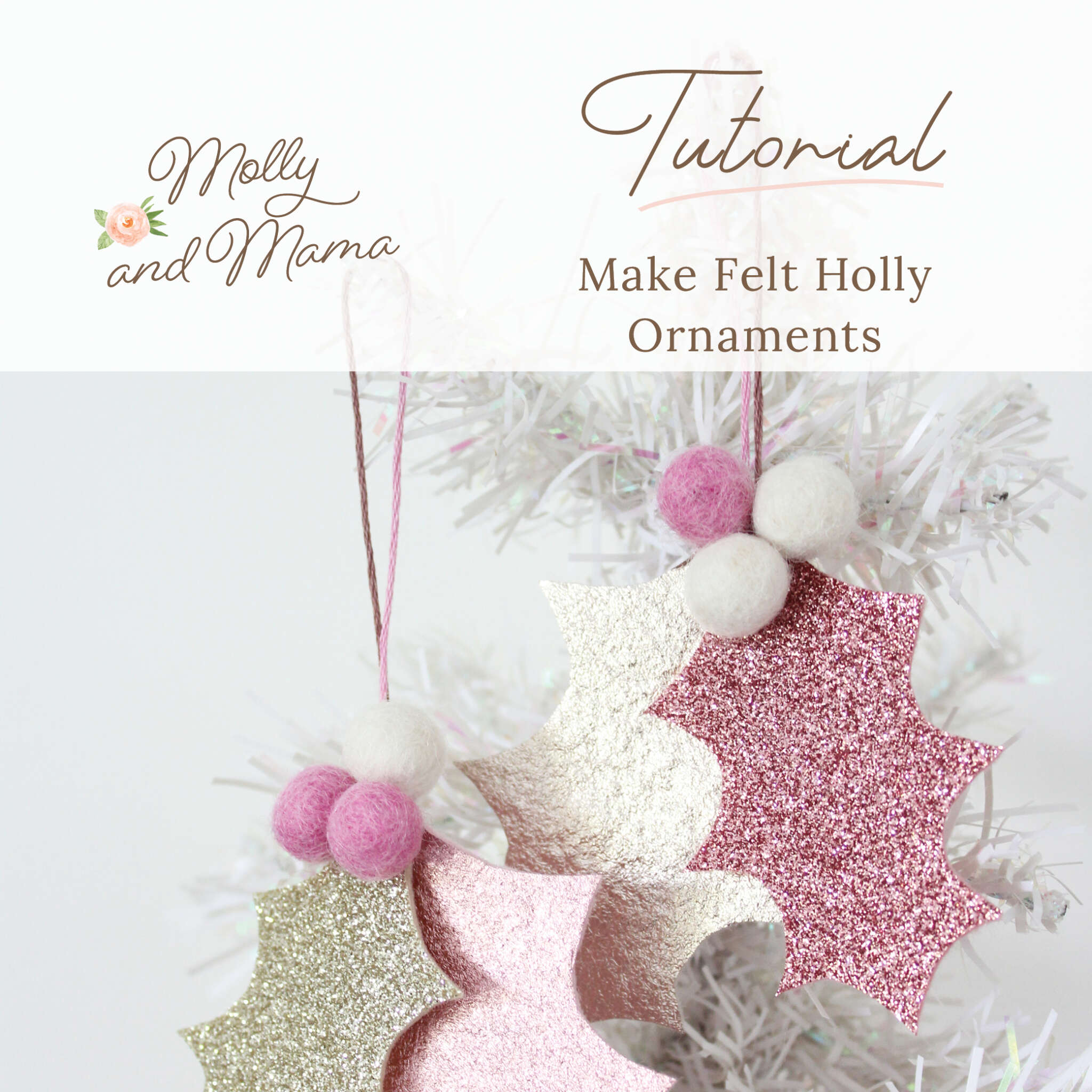
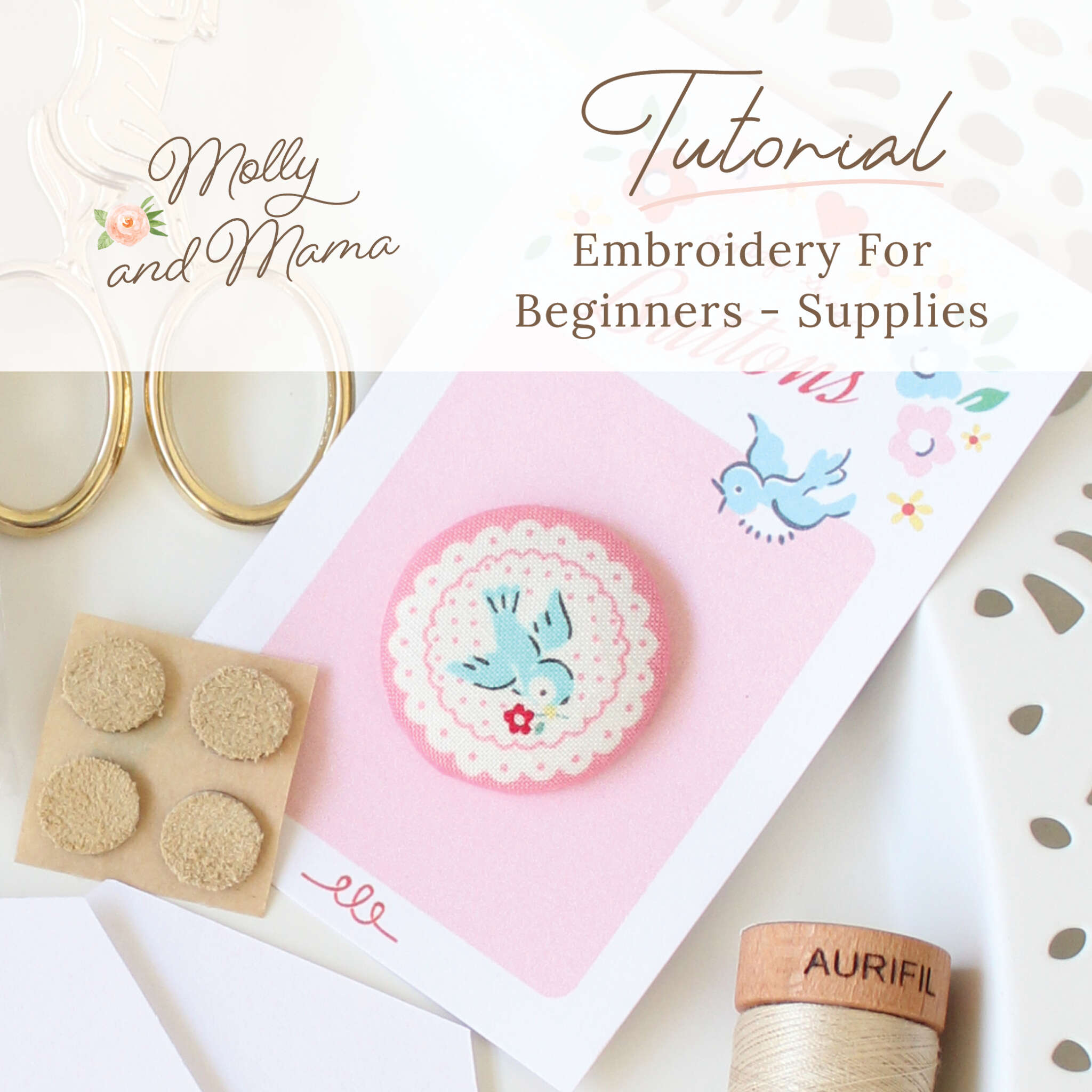
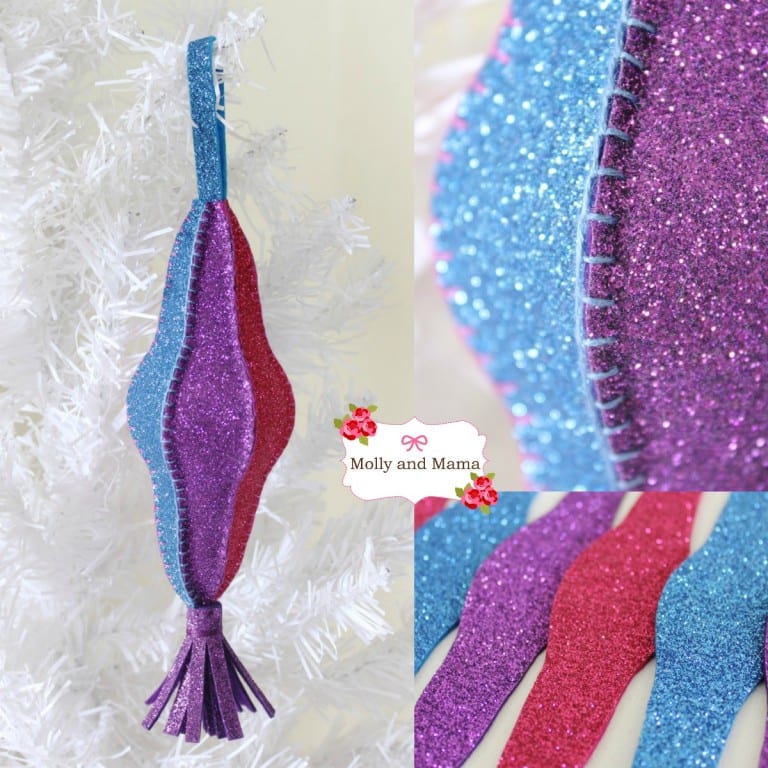
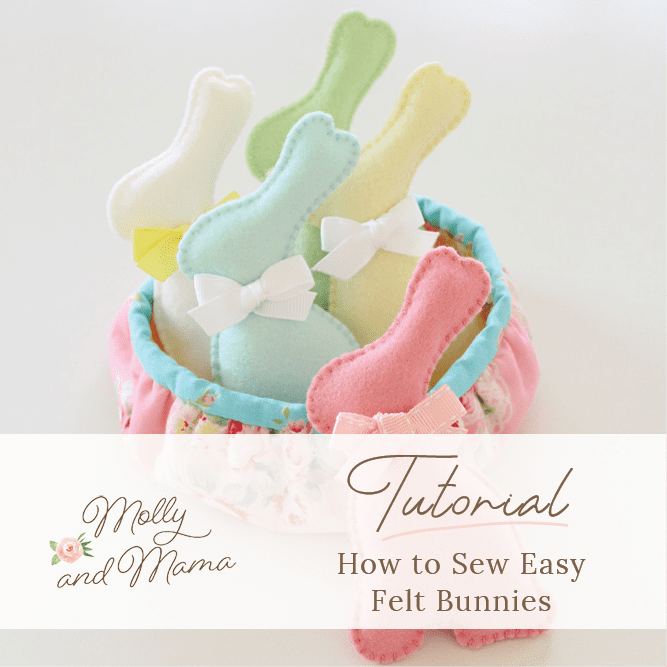

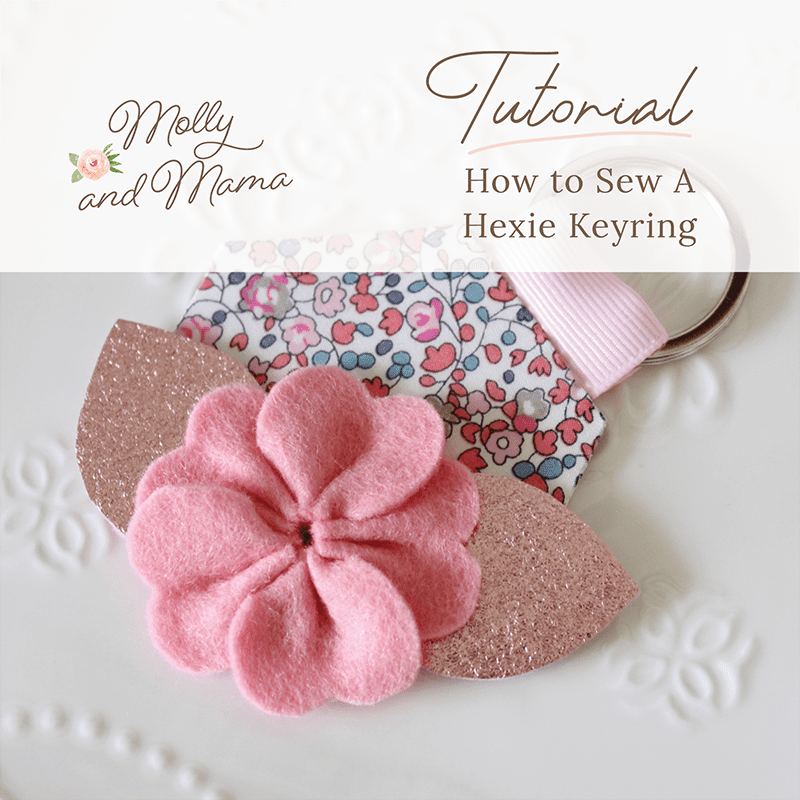
Oh my, this is the cutest thing. I love your little felt cat. Pinning.
Thanks so much Julie. It was so much fun to create this project for Sew A Softie. I’m glad you like it!
What a great tutorial Lauren! Very clear and thorough and your photos are so beautiful. Thanks for joining into Sew a Softie and it’s so nice that we’re both blogging for the same reason…and both of us happen to be Aussies 🙂
Hooray for Aussie Bloggers and sewing to share our skills! Thanks for having me on the Sew A Softie tour. Cinnamon Kitty is in some beautiful company!
What a sweet little kitten! Love it! 🙂 Lisa
Thank you Lisa!
How divine
Thank you Linda!